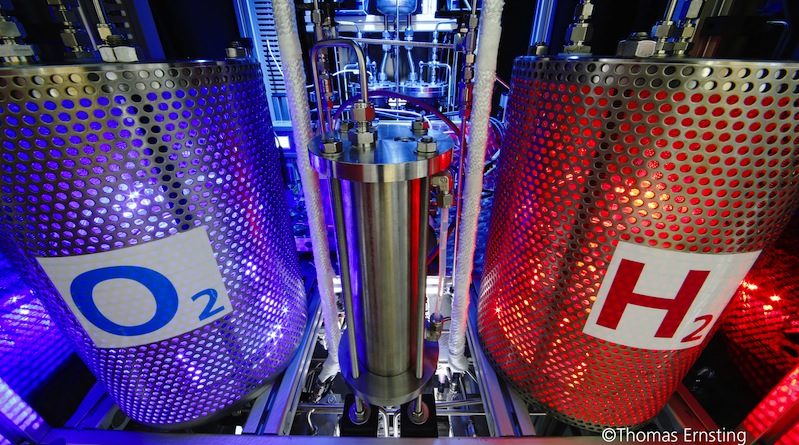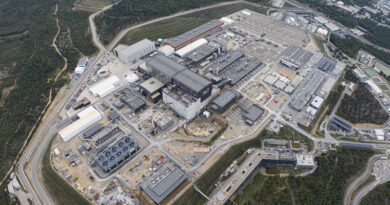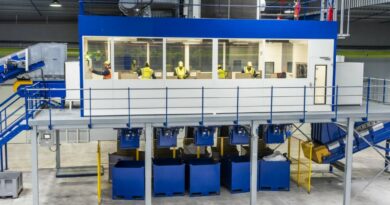
System Efficiency – hydrogen: enabling a decarbonised, stable and resilient economy
Europe is moving towards a low carbon energy system with the ambitious aim of a more sustainable society.
With this goal in mind, hydrogen will be a key component of Europe’s decarbonised future.
Hydrogen is an energy carrier, a fuel and a chemical feedstock, which if produced adequately can reduce greenhouse gas emissions (GHG), strengthen energy independence and mitigate the challenges posed by variability and intermittency of renewable energy systems.
It offers a clean, sustainable, and flexible option to convert renewable electricity into an energy carrier based for use in mobility, heat and industrial applications. As the “gaseous form of electricity”, it is an enabler for sectoral integration.
Renewable power generation is characterised by variability and intermittency.
As the renewables’ penetration increases, the problem of balancing supply and demand for operators of electricity networks also rises.
Periods of non-consumption-oriented production of renewable energy are usually managed by curtailing renewable power sources because the electricity cannot be sold at the time of generation.
Hydrogen provides valuable advantages in this context, as it offers emission-free grid balancing and energy storage capacities and the possibility to satisfy demands for heat, transport, power or industry achieving high utilisation rates and absorption of energy through sectoral integration.
Hydrogen technologies in a power system integrating high penetration of renewables can operate throughout long periods of non-consumption-oriented production of renewable energy by feeding hydrogen into one or more energy sinks (e.g. the gas grid, the storage tanks of hydrogen refuelling stations, and salt caverns).
Production of hydrogen for injection into the natural gas grid is usually referred to as power-to-gas (P2G). It is currently being demonstrated at approximately 15 sites across Europe.
As a major energy conveyor, the gas grid offers an extant energy sink for renewables and, unlike the power system, has a large inherent storage capacity in the TWh scale. Therefore, power from the electricity grid can be transferred readily to the gas grid via P2G.
The ability of Power-to-Hydrogen to access and integrate each sector of the energy system opens up the opportunity for deploying and utilising renewables to a much greater extent.
Whereas electricity derived from renewables provides the power sector with a profound decarbonisation pathway, the heat and mobility sectors as well as industry do not yet have decarbonisation pathways of equivalent significance.
The versatility of hydrogen enables these sectors to be integrated and to contribute to Europe’s energy transition.
Hydrogen technologies will allow for the efficient use of Europe’s world class energy infrastructure safeguarding Europe’s competitiveness while protecting consumers access to reliable and affordable energy.
For example, the decarbonisation of the gas grid: because heat is by far the largest energy demand and has the greatest seasonal variation, P2G can be applied to decarbonise gas networks and ultimately store excess renewable energy produced in the summer for release in the winter.
Moreover, Hydrogen can be used in Fuel Cell Electric Vehicles (3-5min refuelling time with a 500km range) as these penetrates the European vehicle market or be blended in the refining process and thereby contribute to an immediate carbon emission reduction in the 120m internal combustion engine diesel vehicles on European roads taking advantage of the existing retail fuel distribution system.
Today, global hydrogen production is at 55 million metric tons annually with ±50% from SMR. Out of this, ±40% is consumed at refineries1.
Utilising green hydrogen could therefore have a significant beneficial effect on the overall system decarbonisation. Fuel producers are obliged to reduce CO2 in their supply chain.
This CO2 reduction can be achieved by using green hydrogen in the refinery process. Although the more costly green hydrogen doesn’t compete yet economically with hydrogen produced from fossil hydrocarbons, it does compete with biofuels.
To achieve this, regulations should provide non discriminating rules that allow the use of hydrogen in the upstream fuel processes in a fair competition (both in price and GHG mitigation potential) with biofuels to fulfil the obligations for the renewable share in liquid fuels, therefore helping to reduce the dependency of the European Union on natural gas whilst contributing to the reduction of palm oil consumption.
Hydrogen can also be used for greenhouse gas reduction in the industry, for instance, a process to produce steel is to use hydrogen for the reduction of ore, so-called Direct reduced iron (DRI), which avoids the use of carbon altogether.
Several initiatives are on the way in Sweden (HyBRIT project), Austria (H2Future project) Germany (SALCOS project); partly supported by European funding.
Lastly, Hydrogen can be used as a green synthetic substitute for many different applications in the fuel and chemical sectors.
Methanol, for example, is a liquid chemical with many different possibilities of application. Many projects are underway, globally, to assess and scale-up the potential of such synthetic fuels/chemicals such as the MefCO2 (synthesis of methanol from captured carbon dioxide using surplus electricity) and the Carbon2Chem (utilisation of steel mill waste gases) projects.
It is time that Europe not only gets away from the silo thinking of sectors but also from the old way of thinking that pushed for individualistic sector targets, e.g. energy efficiency increase in cars.
The future system needs to be fully integrated to be truly efficient. The main issue is how does the whole system benefit from either using direct electricity or convert from it to hydrogen which can then be, for example, injected into the European gas grid.
This would allow Europe to not only keep its vast and integral assets functioning but also to use this gas to decarbonise energy-intensive industries such as steel, cement or refineries and increase its energy independence.
Hydrogen, by enhancing grid balancing, can be a systemic factor in a deeply decarbonised society. It is, therefore, an integral part of the grid and, hence, of system efficiency.




